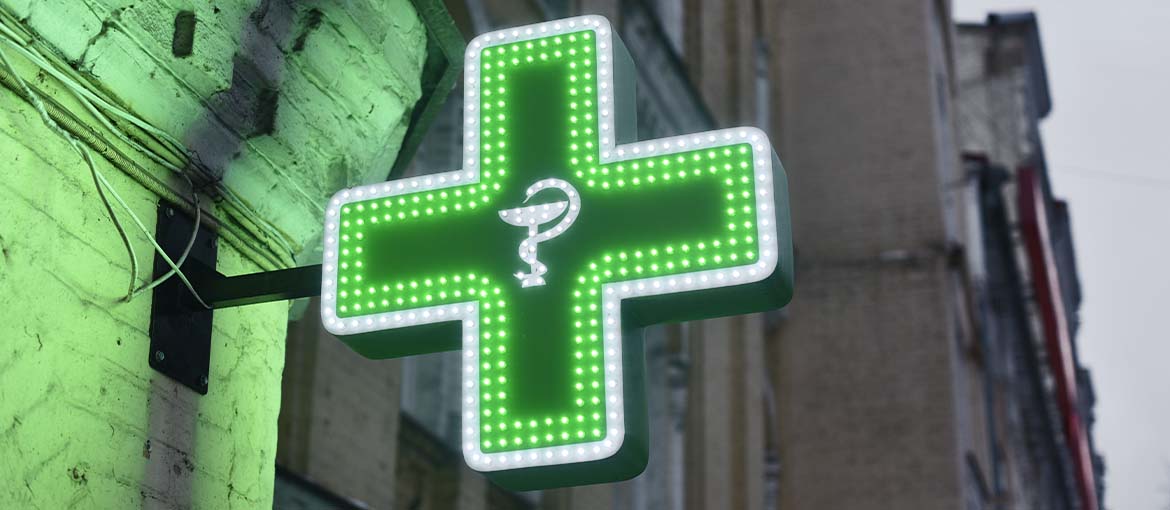The storefront emblem: what is its purpose and significance?
Essentially, the emblem serves as a marker indicating the presence of a business, functioning as an advertising tool to draw potential customers. Typically positioned prominently above the entrance, it prominently displays the store’s logo. However, it might also incorporate additional details, particularly if the logo or name isn’t sufficiently recognizable. For instance, an ironing shop named “Marisa&Paolo” might feature a sign bearing the name and logo alongside the descriptor “Ironing Shop.”
To gain a clearer understanding of what constitutes a storefront emblem, let’s examine some examples.
Concepts and instances of storefront emblems
These emblems can be broadly categorized into two types based on cost and visibility.
Illuminated Emblems
These include signs with built-in lighting, ensuring visibility even at night or in bustling areas. For instance, a bright sign can help a store stand out amidst a busy intersection, akin to the iconic pharmacy cross that remains visible even in the darkest hours.

Naturally, illuminated signs are pricier due to their complexity.
Now, let’s explore the primary types of illuminated signs encountered in urban settings.
- Illuminated Panels
These panels feature internal LED lighting, offering high visibility even from a distance.

- Illuminated Lettering
Comprised of materials such as aluminum, steel, or plastic, these letters contain LED lighting within, ensuring visibility even during nighttime.

- Backlit Signs
These signs are illuminated by LEDs positioned behind them, enveloping the emblem in a soft halo of light for an elegant appearance.

- Illuminated Totems
Vertical signs illuminated from within, placed near the store entrance on the ground. While they offer excellent visibility to passersby, they require ample installation space and cannot replace traditional signs placed above entrances, as they’re less visible from a distance.

Non-illuminated Emblems
These signs lack integrated lighting systems and typically come with lower implementation costs. While they may not offer the same degree of visibility as illuminated signs, they can still be effective in well-lit environments.
There are numerous options available, including signs printed on various materials like forex, plexiglass, aluminum, or polyboard, as well as engraved signs on marble slabs or wooden panels. Alternatively, wrought-iron flag signs, reminiscent of French tradition, can lend a vintage touch.



Moreover, three-dimensional signs featuring raised characters or logos offer heightened visibility, albeit at higher costs.

As for the expense involved, it varies depending on the type of emblem chosen, the professional hired for the job, and any municipal fees applicable. According to Law No. 75 of April 24, 2002, installation fees are exempted for signs covering an area of up to 5 square meters, with larger signs incurring fees proportional to their size.
Obtaining permission to display a storefront emblem involves dialogue with the municipality, followed by the submission of requisite documents such as the sign design, completed forms, and permit applications.
In conclusion, a well-designed emblem can effectively communicate the essence of your business to potential customers. To ensure its effectiveness, focus on factors such as recognizability, clarity, and visibility, keeping in mind brand identity, target audience, and local regulations. With these considerations in mind, embark on your emblem design journey!

